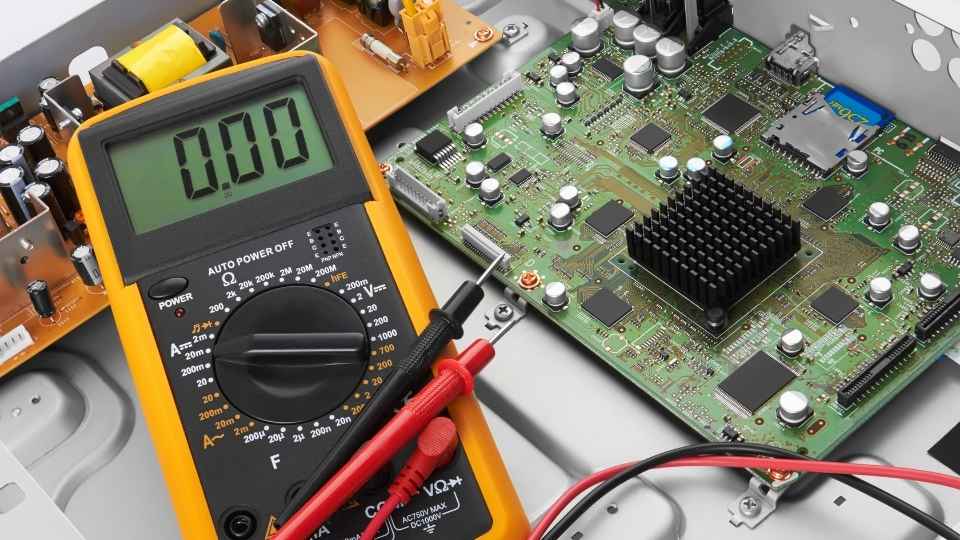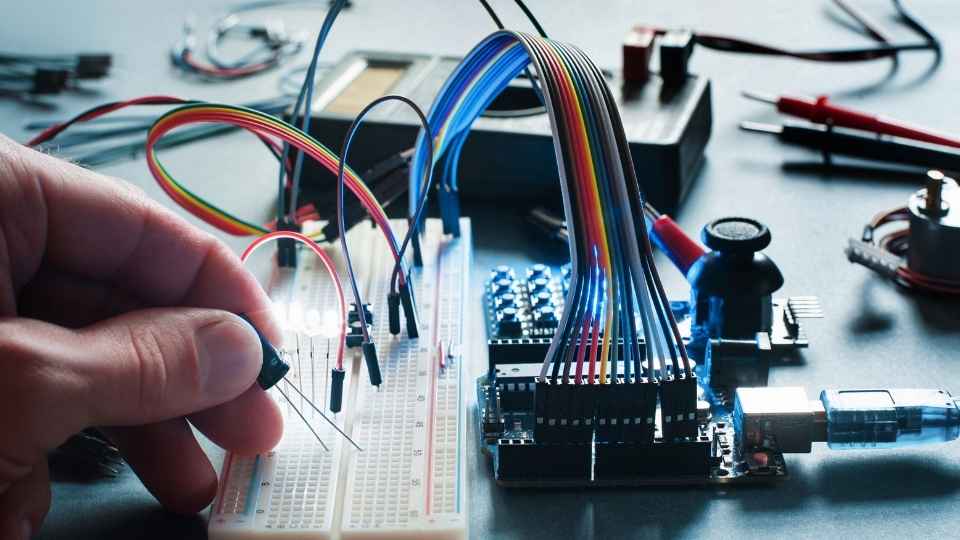
In today's interconnected world, microcontroller protocols play a crucial role in enabling efficient and seamless communication between devices. Whether it's deciphering the complex communication of CAN Bus or harnessing the power of Zigbee for IoT applications, understanding these protocols is essential for engineers and developers.
In this article, we delve into the intricacies of various microcontroller protocols, providing technical insights and detailed analysis to help you choose the right protocol for your specific application.
Key Takeaways
- CAN Bus is a widely used protocol in microcontrollers that enables reliable and efficient data exchange between ECUs.
- Modbus is a client-server protocol that supports both serial and Ethernet communication, using registers to store data.
- Zigbee is a wireless protocol that operates on the IEEE 802.15.4 standard and offers mesh networking capability.
- MQTT is a lightweight messaging protocol for IoT connectivity that utilizes a publish-subscribe communication model and provides different Quality of Service levels.
CAN Bus: Understanding the Basics and Communication Protocol
The Controller Area Network (CAN) bus is a widely used communication protocol in the field of microcontrollers, enabling reliable and efficient data exchange between electronic control units (ECUs) within various industrial applications. It was originally developed by Robert Bosch GmbH in the 1980s and has since become an industry standard for automotive applications, as well as in other industries such as aerospace and manufacturing.
CAN bus allows multiple ECUs to communicate with each other over a common network, using a two-wire twisted pair cable. The protocol supports high-speed communication, with data rates ranging from 1 kbps to 1 Mbps. It also offers robust error detection and correction mechanisms, ensuring data integrity even in harsh environments.
One of the key features of CAN bus is its ability to prioritize messages based on their importance. This means that critical messages can be given higher priority, ensuring they are transmitted without delay or interference.
In summary, CAN bus provides a reliable and efficient means of communication between ECUs in industrial applications. Its widespread adoption and proven track record make it an essential component in modern microcontroller systems.
Transition: Now that we have understood the basics of CAN bus communication protocol, let us explore another popular industrial communication protocol - Modbus.

Exploring Modbus: An Industrial Communication Protocol
Exploring Modbus, an industrial communication protocol, offers valuable insights into the workings of this widely-used system. Here are four key aspects to consider:
Structure: Modbus follows a client-server architecture where a master device initiates communication with one or more slave devices.
Protocol Variants: Modbus has several variants including Modbus RTU (using binary encoding), Modbus ASCII (using ASCII characters), and Modbus TCP (over Ethernet).
Communication Modes: Modbus supports both serial and Ethernet communication, making it versatile for various industrial applications.
Data Representation: The protocol uses registers to store data, which can be accessed by addresses through read or write operations.
Understanding these intricacies of Modbus is crucial for effective implementation in industrial systems.
Now let's delve into another important microcontroller protocol – Zigbee, which is widely used in IoT applications.

Unraveling Zigbee: A Wireless Protocol for IoT Applications
Unveiling the characteristics of Zigbee, a wireless protocol widely used in IoT applications, provides valuable insights into its functionality and potential applications. Zigbee operates on the IEEE 802.15.4 standard, using low-power radio frequency to establish communication between devices within a personal area network (PAN). It is designed for low data rate, low power consumption, and short-range transmission, making it ideal for home automation, smart energy management systems, and healthcare applications.
Zigbee networks consist of three types of devices: coordinators, routers, and end devices. Coordinators are responsible for forming the network and managing communication among devices. Routers act as intermediaries that extend the network's range by relaying messages between devices. End devices are battery-powered sensors or actuators that collect data or perform actions based on received commands.
With its mesh networking capability and ability to support thousands of nodes per network, Zigbee offers a scalable solution for connecting various IoT devices.
Transitioning to another protocol in microcontroller communication brings us to MQTT: a lightweight messaging protocol for IoT connectivity.
MQTT: A Lightweight Messaging Protocol for IoT Connectivity
MQTT, or Message Queuing Telemetry Transport, is a lightweight messaging protocol specifically designed for IoT connectivity.
It enables efficient and reliable communication between devices with minimal power consumption and network bandwidth usage.
MQTT's simplicity and flexibility make it an ideal choice for IoT applications, offering benefits such as real-time data transmission, scalability, and support for unreliable networks.

MQTT Vs. Other Protocols
Comparing MQTT with other protocols reveals distinct differences in their functionalities and suitability for various IoT applications. Here are four key points to consider:
Lightweight: MQTT is designed to be a lightweight protocol, making it ideal for resource-constrained devices such as microcontrollers. It minimizes network bandwidth usage and reduces power consumption.
Publish-Subscribe Model: MQTT utilizes a publish-subscribe communication model, where data is published by one device and subscribed to by another. This asynchronous messaging approach allows for efficient and scalable communication between multiple devices.
QoS Levels: MQTT provides different Quality of Service (QoS) levels to ensure reliable message delivery based on the specific requirements of an application. This flexibility enables trade-offs between reliability and network overhead.
Wide Protocol Support: Unlike some other protocols that are limited in their compatibility, MQTT enjoys broad support across different platforms, programming languages, and operating systems.
Understanding these distinctions sets the stage for exploring the benefits of using MQTT in IoT applications.
Benefits of MQTT
One of the notable advantages of MQTT is its ability to support efficient and scalable communication between multiple devices through a publish-subscribe model. This lightweight messaging protocol allows for real-time data exchange, making it ideal for applications where timely information delivery is crucial.

MQTT operates on top of TCP/IP, ensuring reliable transmission over networks with varying levels of stability. It also minimizes bandwidth consumption by using a small packet size and allowing for compressed data transfer.
Moreover, MQTT's asynchronous nature enables devices to communicate without being actively engaged in a constant connection, resulting in reduced power consumption and increased battery life for IoT devices. With its simple yet powerful design, MQTT provides an effective solution for distributed systems that require flexible and reliable communication.
This seamless connectivity lays the foundation for addressing wireless communication nuances: challenges and solutions.
Wireless Communication Nuances: Challenges and Solutions
Wireless communication poses various challenges that require effective solutions to ensure reliable and secure data transmission between different protocols such as CAN bus and Zigbee. These challenges can include interference, limited bandwidth, security vulnerabilities, and compatibility issues.
To address these concerns, several solutions have been developed:
Interference mitigation techniques: Using frequency hopping or spread spectrum techniques to minimize the impact of interference from other devices operating in the same frequency range.
Bandwidth optimization methods: Implementing efficient data compression algorithms or using advanced modulation schemes to maximize the utilization of available bandwidth.

Security measures: Employing encryption algorithms and authentication protocols to protect data integrity and prevent unauthorized access.
Protocol interoperability solutions: Developing gateways or middleware that facilitate seamless communication between different protocols, allowing devices with different communication standards to exchange information.
Comparing CAN Bus, Zigbee, and Other Protocols: Which Is Right for Your Application?
When it comes to selecting the right protocol for your application, it is crucial to consider factors such as application-specific requirements, pros and cons of each protocol, as well as compatibility and integration with existing systems.
Two commonly used protocols, CAN Bus and Zigbee, offer different advantages and trade-offs.
In this section, we will compare CAN Bus, Zigbee, and other protocols to help you make an informed decision based on your specific needs.
Application-Specific Protocol Selection
To effectively determine the most suitable protocol for a specific application, it is crucial to consider factors such as data requirements, network topology, and potential interference.
Here are four key considerations when selecting an application-specific protocol:

Data Requirements: Determine the amount and type of data that needs to be transmitted. Different protocols have varying bandwidth capabilities and support different data formats.
Network Topology: Analyze the physical layout of your network to understand how devices will be connected and communicate with each other. Some protocols are better suited for point-to-point communication while others excel in multi-node networks.
Potential Interference: Assess the environment where your application will be deployed to identify potential sources of interference, such as other wireless devices or electromagnetic noise. Some protocols offer robust mechanisms to mitigate interference.
Scalability: Consider future expansion plans and the ability of the chosen protocol to accommodate increased device connectivity and data traffic.
By carefully evaluating these factors, you can select an appropriate protocol that aligns with your application's requirements and ensures optimal performance.
Moving forward, let's now explore the pros and cons of some popular microcontroller protocols.
Pros and Cons
One important aspect to consider when evaluating the pros and cons of different microcontroller protocols is their compatibility with existing hardware and software systems. Compatibility plays a crucial role in ensuring seamless integration and communication between various components within a system.

Each protocol comes with its own set of advantages and disadvantages, which need to be carefully weighed against the specific requirements of the application. For instance, CAN bus offers high data rates, robustness, and reliability, making it suitable for automotive applications. On the other hand, Zigbee excels in low-power consumption and wireless mesh networking capabilities, making it ideal for home automation or industrial control systems.
However, it's important to note that compatibility issues may arise when trying to integrate different protocols into an existing system architecture. Therefore, understanding the compatibility and integration challenges is essential before choosing a specific microcontroller protocol.
Compatibility and Integration
Compatibility and integration are crucial factors to consider when working with microcontroller protocols like CAN bus and Zigbee. These protocols need to be compatible with the hardware and software components being used, ensuring seamless communication between devices. Integration refers to the ability of these protocols to work together in a unified system, enhancing functionality and efficiency.
To understand the importance of compatibility and integration, consider the following:
Compatibility ensures that different devices can communicate effectively, minimizing errors and maximizing performance.
Integration allows for the consolidation of multiple protocols into a single system, reducing complexity and improving overall control.
Compatibility enables interoperability between different manufacturers' products, providing freedom of choice for users.

Integration facilitates scalability by allowing additional devices or protocols to be added without significant reconfiguration.
Frequently Asked Questions
What Are the Advantages and Disadvantages of Using the CAN Bus Protocol in Industrial Applications?
The advantages of using the CAN bus protocol in industrial applications include high reliability, real-time communication, and robustness. However, it also has disadvantages such as limited bandwidth and complexity in implementation and troubleshooting.
How Does Modbus Protocol Differ From Other Industrial Communication Protocols?
Modbus protocol is a widely used industrial communication protocol that differs from others in its simplicity, flexibility, and compatibility with various devices. It utilizes a master-slave architecture and supports both serial and Ethernet connections for reliable data exchange in industrial applications.
What Are the Key Features of Zigbee That Make It Suitable for Iot Applications?
Zigbee, a wireless communication protocol, offers key features that make it suitable for IoT applications. Its low-power consumption, mesh networking capability, and support for large-scale deployments enable efficient and reliable connectivity in diverse environments.
How Does MQTT Protocol Ensure Lightweight Messaging in Iot Connectivity?
The MQTT protocol ensures lightweight messaging in IoT connectivity by using a publish-subscribe model, minimizing data transfer and reducing network bandwidth. It employs a small code footprint, making it suitable for resource-constrained devices.
What Are Some Common Challenges Faced in Wireless Communication and What Are the Possible Solutions to Overcome Them?
Common challenges in wireless communication include signal interference, limited bandwidth, and security vulnerabilities. Solutions include using advanced modulation techniques, implementing error correction algorithms, and employing encryption protocols to ensure secure transmissions.
 Basic Electronics ConceptsEssential ToolsCircuit Design BasicsMicrocontrollersDIY Electronics ProjectsRoboticsPrivacy PolicyTerms And Conditions
Basic Electronics ConceptsEssential ToolsCircuit Design BasicsMicrocontrollersDIY Electronics ProjectsRoboticsPrivacy PolicyTerms And Conditions
